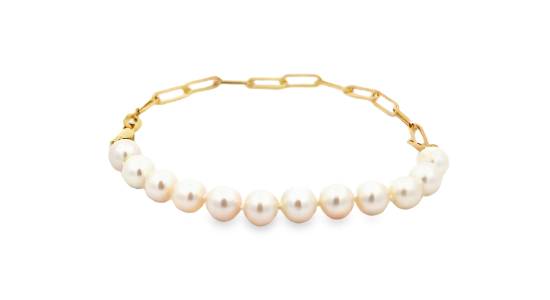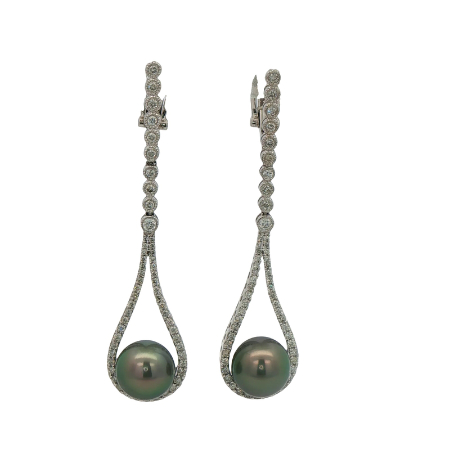
When adding to your Pearl jewelry collection, it's important to learn about the different types of pearls. Historically, pearls were known as symbols of beauty and purity. Today, they are recognized as both classic and contemporary, and they come in many more fashionable styles than just a traditional strand of pearls.
Some fun facts about Pearls:
Akoya pearls, or cultured Akoya pearls, are a product of Japanese pearl farms. They are of very high quality, and are set in 18 karat gold clasps.
Akoya pearls are white in color and have a pink overtone. They often look similar to Freshwater pearls, but when compared closely the differences are visible. Akoya pearls are smooth, large and round in shape with more luster than Freshwater pearls.
Akoya Pearls are most commonly used for earrings and necklaces.


Freshwater pearls are grown inside mollusks, naturally occurring in bays, lakes and rivers (fun fact: a single mollusk has the ability to produce fifty pieces of pearls). Generally, Freshwater pearls come from the United States, China and Japan.
Freshwater pearls possess high lustrous quality, and are available at affordable prices. You can find Freshwater pearls in a variety of natural shades, but the white color is considered the most traditional and classic.
Jewelry designed from Freshwater pearls can complement any outfit.
South Sea pearls come from Indonesia, Myanmar and Australia - specifically from mussels and oysters.
South Sea pearls come in a variety of colors and sizes but generally are larger than Akoya pearls. They make a timeless gift for any occasion.


Tahitian pearls, also known as black pearls, are one of the most unique and exotic gemstones on the market. They come from black-lip oysters, known as Pinctada Margaritifera, that are very small and sensitive to the pearl culturing process - making Tahitian pearls more costly.
They’re known as black pearls for their dark color, but you can also find Tahitian pearls in a range of shades from white to grey, as well as in exotic colors like baroque green and chocolate brown.
Tahitian Pearls are especially ideal for earrings, pendants and necklaces.
We value your privacy
On our website, we use services (including from third-party providers) that help us to improve our online presence. The following categories of cookies are used by us and can be managed in the cookie settings. We need your consent before being able to use these services. Alternatively, you may click to refuse to consent, or access more detailed information and change your preferences before consenting. Your preferences will apply to this website only. You can change your preferences at any time by clearing your browser history/cache or visiting our privacy policy page.
By authorizing third-party services, you allow the placement and the reading of cookies and the use of tracking technologies required to keep our website reliable and secure.